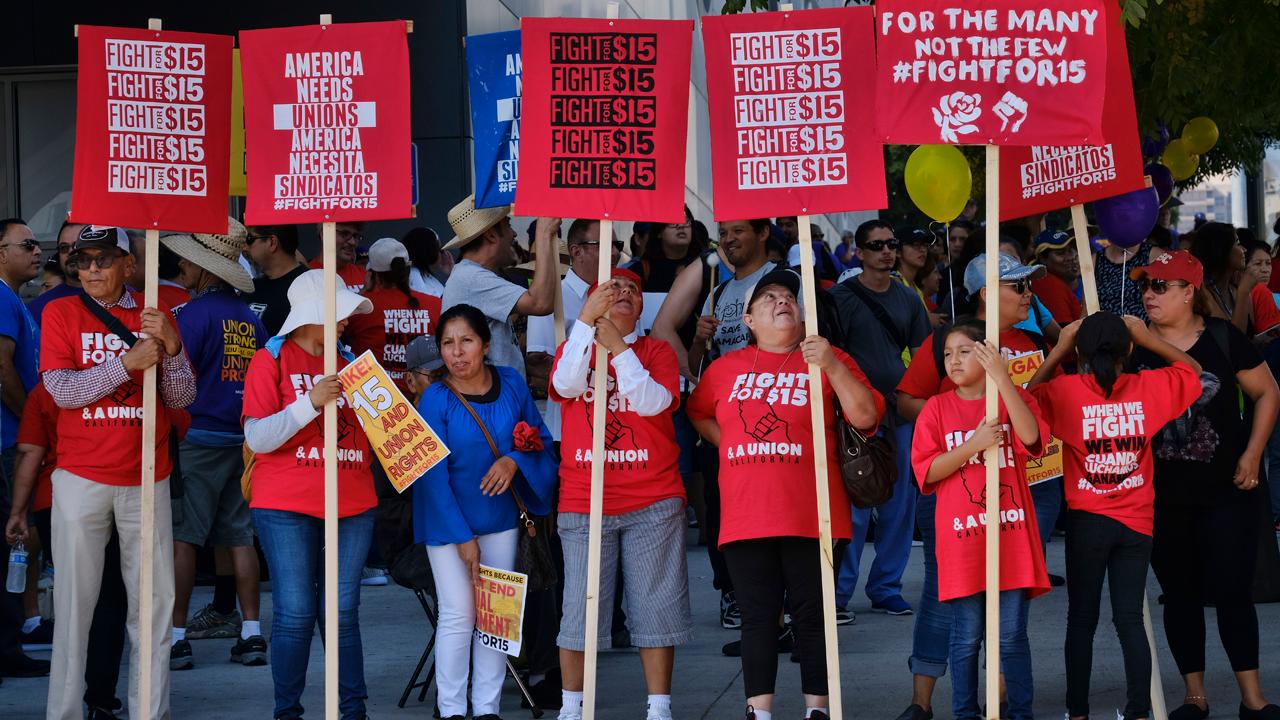Fight for $15 fast-food campaigns suffering funding cut?
The national campaign to raise the minimum wage to $15, known as the Fight for $15, is focusing less on its city-based fast-food campaigns as the union claims it is shifting its strategy.
The Service Employees International Union (SEIU), which underwrites the Fight for $15, allocated $10.8 million for the campaign’s fast-food initiatives in 2017, according to public filings, as first reported by The Center for Union Facts. That is down from $19 million in the prior year.
The campaign was started to organize fast-food workers to raise the federal minimum wage. In the wake of the 2016 elections, SEIU was expected to cut funding to the Fight for $15 by 30%, according to Bloomberg.
“The Fight for $15 has been a tremendously expensive campaign for SEIU … at a minimum [it has] spent $100 million on the campaign since its launch,” Michael Saltsman, director of the Employment Policies Institute (EPI), told FOX Business. “They obviously cut back spending significantly in the Trump era, and it seems like the fast-food [segment] is shouldering a bigger share of that cut back.”
A person with knowledge of the matter rebutted on Wednesday the claim that spending had declined, saying it was unchanged and that the campaign was adopting a different strategy. Instead of having many city committees, SEIU has created one national fast-food local union, which began in October. The person said the funding amount shown on the public filing, therefore, represents just three-fourths of the year.
SEIU is shifting toward more in-house work because of revenue challenges, according to Saltsman. While SEIU has been successful in making the minimum wage a national topic of conversation, it has been less effective in acquiring new dues-paying members, he said. As a result, he said, “SEIU is writing checks, and they’re not seeing a ton of return on it.
“They’re going to do a lot of [the work] in house, and it’s probably going to become a lot less transparent in terms of spending,” he said, adding that’s “not exactly an encouraging precedent.”
While the Fight for $15 held strikes in more than 600 cities across the United States in 2016, such job actions occurred in just 30 cities throughout the first seven months of 2017, according to an analysis by the EPI, which opposes raising the federal minimum wage. The national reach of the group’s sponsored strikes were at the lowest rate since 2013, when they occurred in 60 U.S. cities.
A spokesperson for the union pushed back on claims that its efforts are faltering, saying in a statement: "SEIU's investment in the Fight for 15 is as strong as ever. SEIU is committed to the Fight for 15, which has been transformational for American workers fighting for wages on which they can take care of their families and the opportunity to join together in unions.”
In September, a person with direct knowledge of the matter, told FOX Business that the campaign would be expanding this year to contend with anti-worker politicians ahead of the 2018 elections, with the goal of electing candidates that support the group’s mission and union rights.
Raising the federal minimum wage remains a politically divisive issue. A study conducted by EPI, which analyzed employment trends in California from 1990 through 2017, found that each 10% increase in the minimum wage in the Golden State has resulted in a corresponding 2% decline in employment for affected employees. The impact was larger, 5%, for lower-paid workers. By those estimates, the EPI projects that the pending $15 minimum wage hike would cost California 400,000 private-sector jobs, with heavy losses in both the food-service and retail sectors.
On the other hand, the Institute for Research on Labor & Employment (IRLE) at the University of California-Berkeley, found that a higher minimum wage would actually add a small amount of jobs to the state economy by 2023.




















